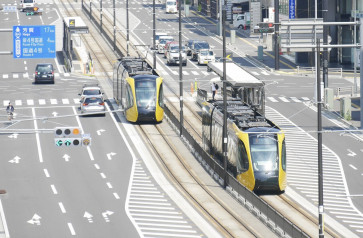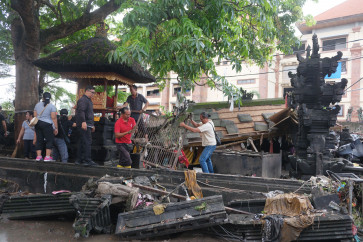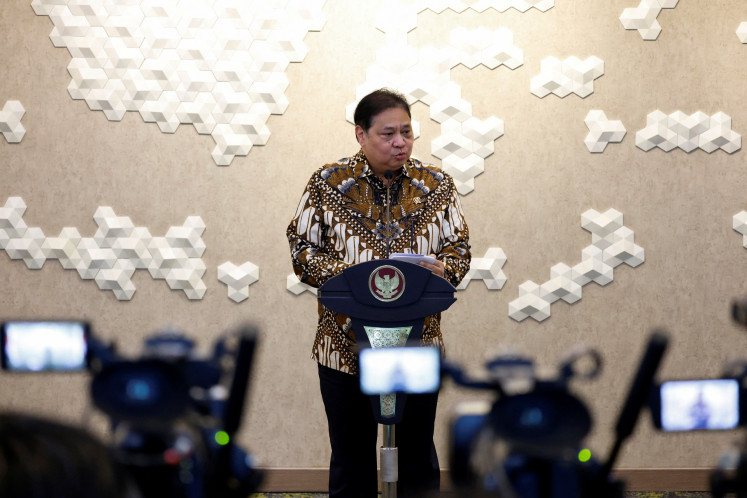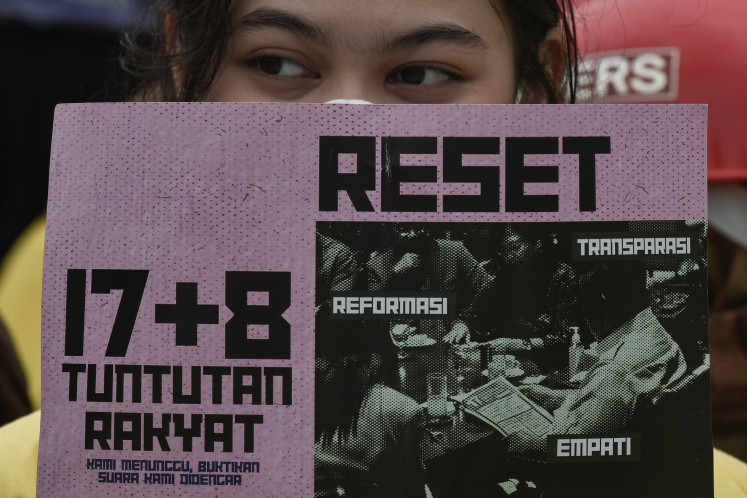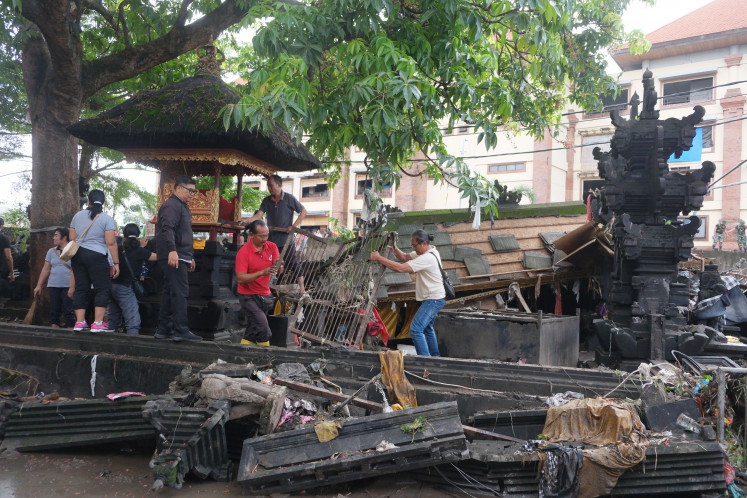Popular Reads
Top Results
Can't find what you're looking for?
View all search resultsPopular Reads
Top Results
Can't find what you're looking for?
View all search resultsThe TNI: Strategic changes and implications
Following President Susilo Bambang Yudhoyono’s re-election in November 2009, the Indonesian Military (TNI) have undergone several structural changes, many of which escaped notice of a public distracted by the numerous political dramas unfolding in Jakarta
Change text size
Gift Premium Articles
to Anyone
F
ollowing President Susilo Bambang Yudhoyono’s re-election in November 2009, the Indonesian Military (TNI) have undergone several structural changes, many of which escaped notice of a public distracted by the numerous political dramas unfolding in Jakarta.
Many of these changes will have significant implications for the country’s still nascent military reform process and could potentially change the entire outlook of the defense establishment.
First, there were major reshuffles within the officer corps following President Yudhoyono’s re-election.
From the first reshuffle on Nov. 17, 2009 to the latest one on Aug. 6, 2010, there have been a total of
13 reshuffles authorized by the TNI Commander (not including lower level changes authorized by
the service chiefs) affecting 526 officers.
Many strategic positions changed hands, including nearly all of the regional commanders, the Army Strategic Reserves, Army’s Special Forces, Defense Ministry’s Secretary-General and Vice Defense Minister, to name a few. These changes have also seen the rise of younger officers from the Military Academy Class of 1981 to 1986 (which had among the lowest number of graduates) taking the helm of high command.
Second, from a strategic perspective, the Ministry of Defense (MoD) finally completed the 2009 Strategic Defense Review and formulated the Minimum Essential Force (MEF) document in February 2010.
This document is meant to complement the Defense White Paper, State Defense Doctrine, State Defense Strategy, and Defense Policy Guidelines (all of which were passed in 2008), and will be the strategic reference for Indonesia’s defense planning for the next decade.
The MEF has also systematically outlined — for the first time in a long while — Indonesia’s strategic requirements until 2029 based on the projected actual threats (terrorism, separatism, border disputes, natural disaster, horizontal conflicts, energy scarcity) and potential threats (climate change, sea lanes of communications violations, environmental degradation, pandemics, financial crisis, cyber crime, foreign aggression, and water and food crisis).
Thirdly, from an organizational perspective, two major laws were passed: Government Regulation (PP) No. 39 of 2010 on the Administration of Soldiership (dated March 12, 2010) and Presidential Decree (Perpres) No. 10/2009 on the Organizational Structure of the Indonesian Military (dated Jan. 28, 2010). Both regulations were actually meant to codify many of the existing practices and ad-hoc changes within the TNI (such as the abolition of their socio-political offices) that took place over the past decade.
The previous law that regulated and outlined the full organizational structure of the TNI (then still named ABRI) was passed in 1983.
What is significant about PP. No. 39 is the re-regulation of enlistment terms and service (divided into compulsory and volunteer), educational requirements and system, promotion policies and rank, as well as personnel benefits.
Meanwhile, aside from fleshing out the skeleton of TNI’s basic Orders of Battle and structural command and control, Perpres No. 10 also restated TNI’s Military Operations Other Than War (allowing them a limited domestic security role) as one of their “basic duties”. Some of the new features also included the formation of a future Reserve Component, the establishment of eight main operational commands (including the Joint Territorial Command), and the creation of a Disaster Relief Rapid Reaction Force (PRC-PB) under the TNI Commander.
The changes highlight several trends. First, the rapid reshuffles involving a large number of officers suggest the increasing pressure of promotional logjams within the high command.
It has been noted that the burgeoning numbers of officers coming through the Military Academy in the 1970s through the 1990s have increased internal jostling for strategic or lucrative positions — which have significantly shrunk to only around 100 following president Soeharto’s resignation in 1998 and ended the practice of seconding officers to civilian positions.
If not properly managed, these internal competitions could have disastrous consequences — hence the issuance of the new laws supposedly founded on a merit-based system.
Also, the rise of the younger generation of officers could be a sign of better things to come.
This is especially the case if those officers never had “political assignments” under former president Soeharto’s New Order that in the past utilized the military to win the general elections.
Their outlook will tend to be more professional, internationally-oriented and technologically-driven.
Second, a long-term and systematic viewpoint that is also comprehensive, as it includes key traditional and non-traditional challenges — outlined in the MEF document suggests the improvement of TNI’s strategic assessment capability. The “securitization” of several domestic threats in the military’s basic thinking however needs further refinement to prevent possible clashes with the National Police in their day-to-day operations.
That said, the wider-lens strategic perspective also means that the TNI will assess and develop new missions, including disaster management — which is to be supported by the creation of the Disaster Relief Rapid Reaction Force. It also shows that the TNI is starting to think ahead and not just focused on the issue of the day.
Finally, the TNI has finally recognized that personnel management and organizational infrastructure needs to be properly regulated and managed when embarking on a defense transformation journey.
The above changes could prepare the groundwork for future technologically-driven acquisitions, such as the recently announced cooperation with South Korea’s advanced KFX fighter jet program.
In terms of the overall military reform, however, these are baby-steps. How the new regulations are implemented will be crucial. But when not properly guarded — by the government, parliament, and civilian defense community — the journey could prove to be hazardous in the years to come.
The writer is a researcher with the Centre for Strategic and International Studies, Jakarta. He is currently a visiting associate fellow with the Centre for Non-Traditional Security Studies at the S. Rajaratnam School of International Studies (RSIS), Nanyang Technological University.



